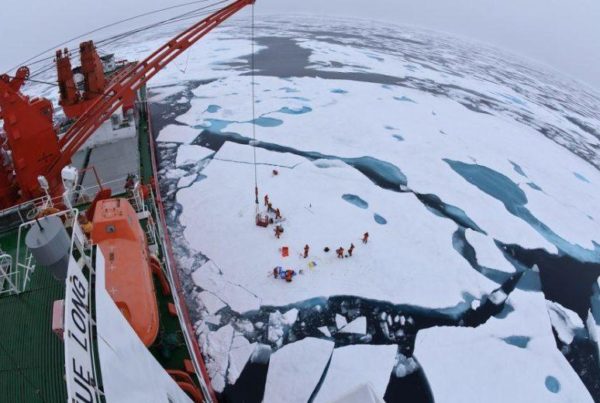By Kristyn Byrne. (Originally published May 11, 2016 on the NATO Association of Canada. Re-printed with permission.)
China recently turned down a port call request by U.S. aircraft carrier Stennis in Hong Kong. Beijing’s refusal to allow the American warship into Hong Kong, normally a routine visit, was a sign of the increasingly chilly relationship between the two countries and the growing dispute over the issue of sovereignty in the South China Sea.
The nuclear-powered Stennis first entered the South China Sea on March 1st, 2016 and has been conducting patrols with the Chinese navy apparently keeping close watch. China has territorial disputes over the water way and its islands with the Philippines, Vietnam, and other Asian countries. It has also sparked U.S. and regional concerns in the last couple of years by commencing a massive construction of artificial islands in order to bolster its claims.
It was not immediately clear why the Stennis was denied port access as the Chinese foreign ministry only commented that port calls by US ships are decided on a “case by case basis in accordance with sovereignty principles and specific circumstances.” However, as of late, the U.S. has made its position on the issue and U.S. objections to China’s actions clear.
U.S. Defence Secretary Ash Carter visited the Stennis while it transited the South China Sea on April 15 to underscore U.S. concerns about the need to maintain freedom of navigation in the face of Chinese moves. During the trip, Mr. Carter criticized the Chinese and said that the United States would work with its allies in the region.
Washington does not recognize China’s ownership of the islands, and in February President Obama reiterated the government’s position that “the United States will continue to fly, sail and operate wherever international law allows.”
In this dispute the Stennis has become a “symbol of efforts to spark strategic tensions between China and the United States,” said Shi Yinhong, director of the Centre on American Studies at Renmin University in Beijing.
The South China sea is one of the world’s most active shipping lanes and also one of the most contested spaces that has led, over the decades, to fatal skirmishes and diplomatic deep freezes.
Brunei, Malaysia, the Philippines, Taiwan and Vietnam all dispute the sovereignty of several island chains while the Chinese government claims most of the South China Sea’s outcroppings as its historic birthright, so-called “integral” or “inherent” territory. China says its control over the disputed waters is justified because it was the first to discover them. In 1947, China issued a map demarcating the country’s territorial claims, which were so extensive that it encompassed almost the entire sea. Foreign Minister Wang Yi recently remarked, “History will prove who is the visitor and who is the genuine host.”
Since taking power in late 2012, China’s President Xi Jinping has asserted his nation’s South China Sea claims more vigorously and has reclaimed more than 3,000 acres to build up artificial islands, some of them featuring ports and runways. Vietnam, Malaysia, the Philippines and Taiwan have also expanded islands but on a much smaller scale.
The Philippines took Beijing to the Permanent Court of Arbitration in The Hague after the seizure of Scarborough Shoal, insisting that China had breached international law. Yet China has already indicated it will not honour the international court’s ruling if it goes against Beijing.
China is bound by the United Nations Convention on the Law of the Sea (UNCLOS), which it has ratified. The law states that sub-sea structures, such as reefs, cannot be claimed as sovereign coastline, and that building artificial structures on top of them does not turn them into sovereign territory either.
The UNCLOS typically gives states an exclusive economic zone up to 200 nautical miles from their coastline. The reefs and islands in the South China Sea are more than 500 miles from the Chinese mainland, which would leave most of the islands in the territorial waters of the Philippines and Malaysia.
While China, Vietnam, the Philippines, and Malaysia have ratified the treaty, the U.S. has not, arguing that it infringed upon U.S. sovereignty in its maritime operations.
Beijing also says it upholds the right of freedom of navigation in the South China Sea but Foreign Minister Wang Yi warned, in March 2016, that this did not equal the “freedom to run amok.”
Beijing has repeatedly warned against U.S. interference in the region yet the U.S. Navy continues to oppose the Chinese initiative, deploying additional warships to the disputed zone and conducting maneuvers near artificial islands, citing the “freedom of navigation” principle.
Freedom of navigation is especially important in the case of the South China Sea as it is a vital waterway for global commerce through which approximately $5 trillion in trade is shipped every year and about $1.2 trillion from The United States alone.
Air Force Colonel Larry Card, commander of the Pacific Command’s Air Contingent said, “Free trade depends on our ability to move goods.” China says its actions pose no threat to commercial shipping, and it accuses Washington of undermining regional peace and stability and promoting militarization of the South China Sea.
This a clear instance of China attempting to expand its power and influence in the region, while ignoring international laws, for future economic gains and military dominance. Despite the lack of legitimacy in these territorial claims, the Chinese government shows no signs of altering U.S. behaviour and little interest in improving relations with the U.S. or its regional neighbours.
Kristyn Byrne completed her undergraduate degree in Political Science and International Relations from Carleton University. Her particular interests lie in the history of the Soviet Union and the Eastern European politics.








